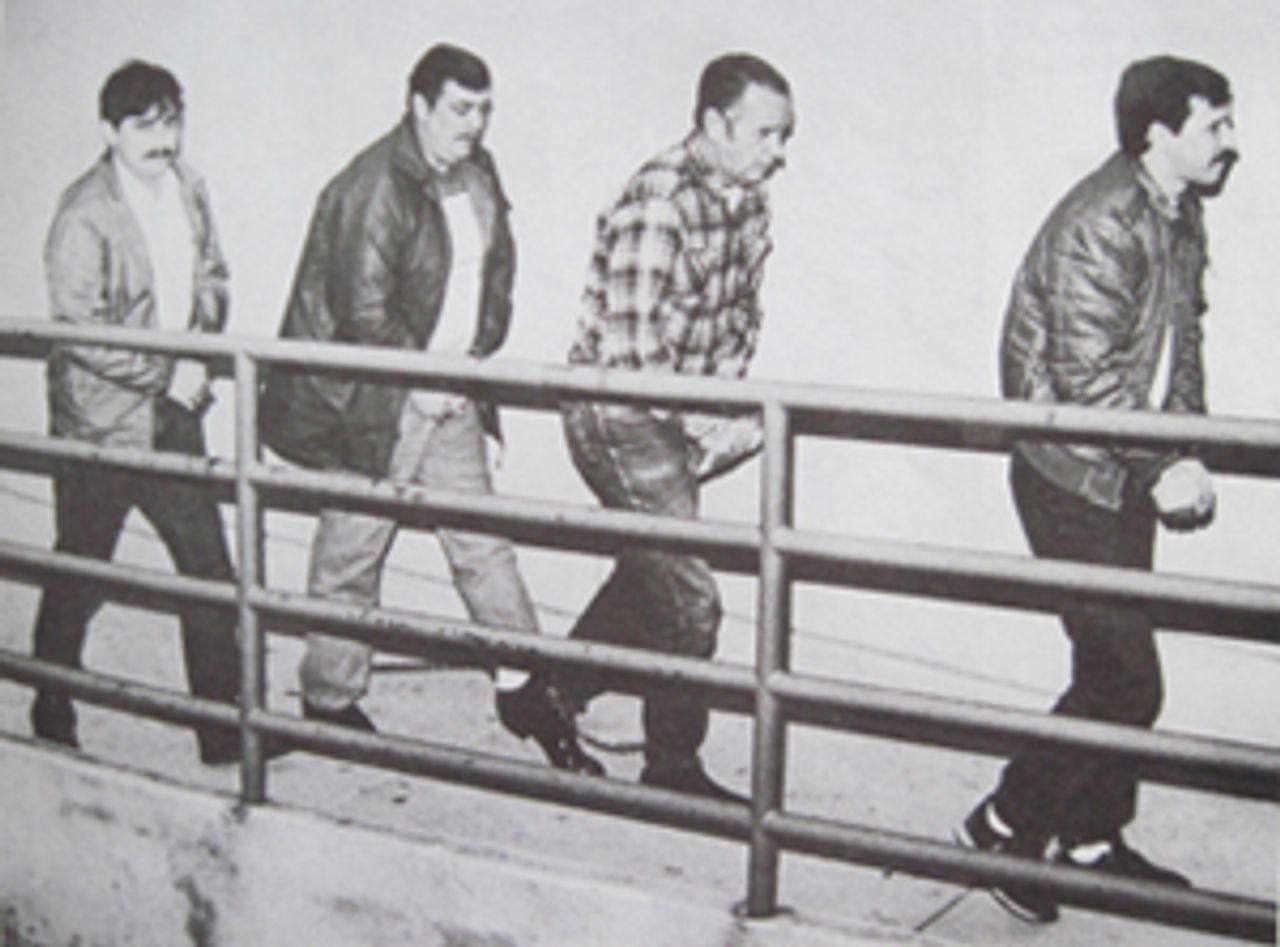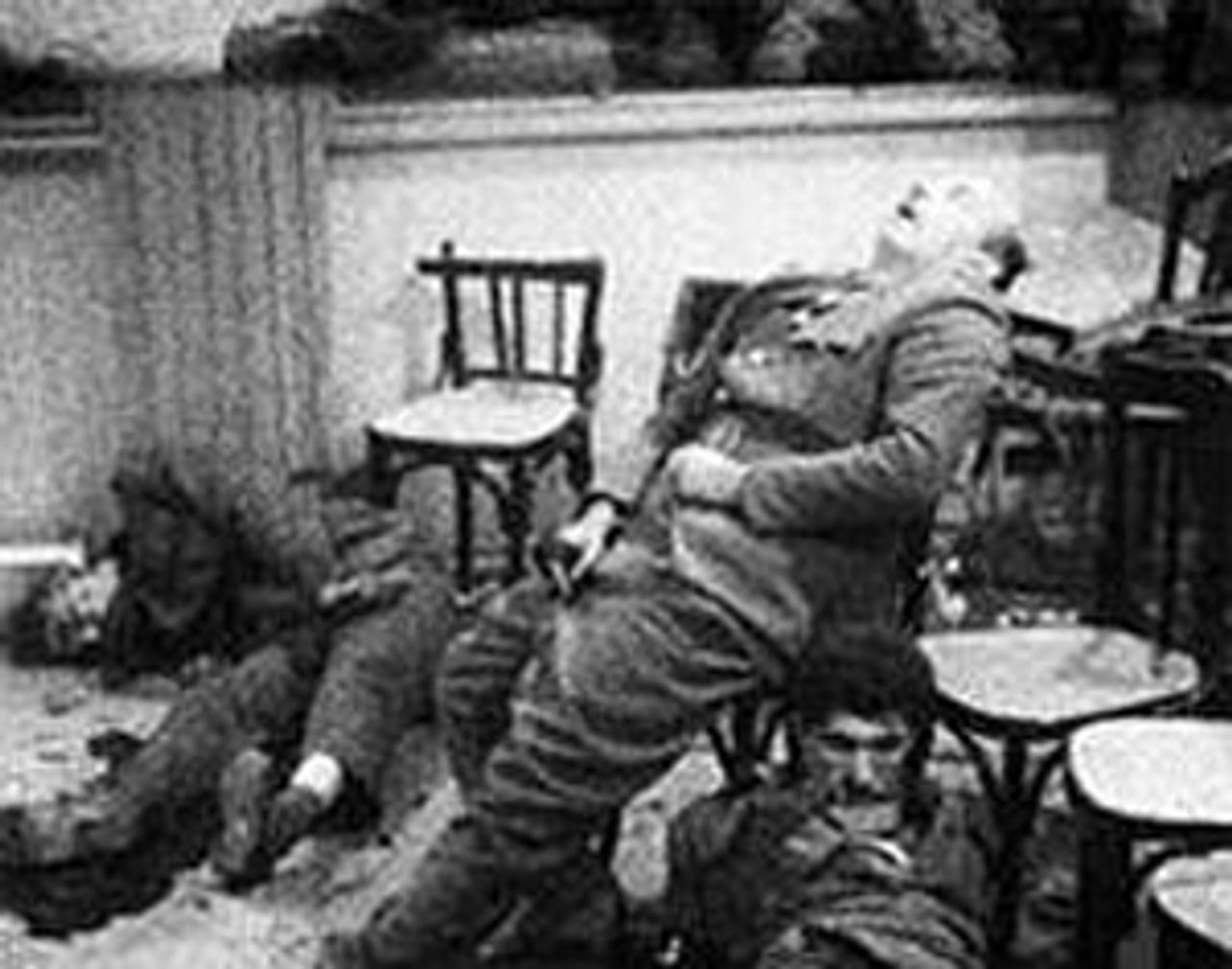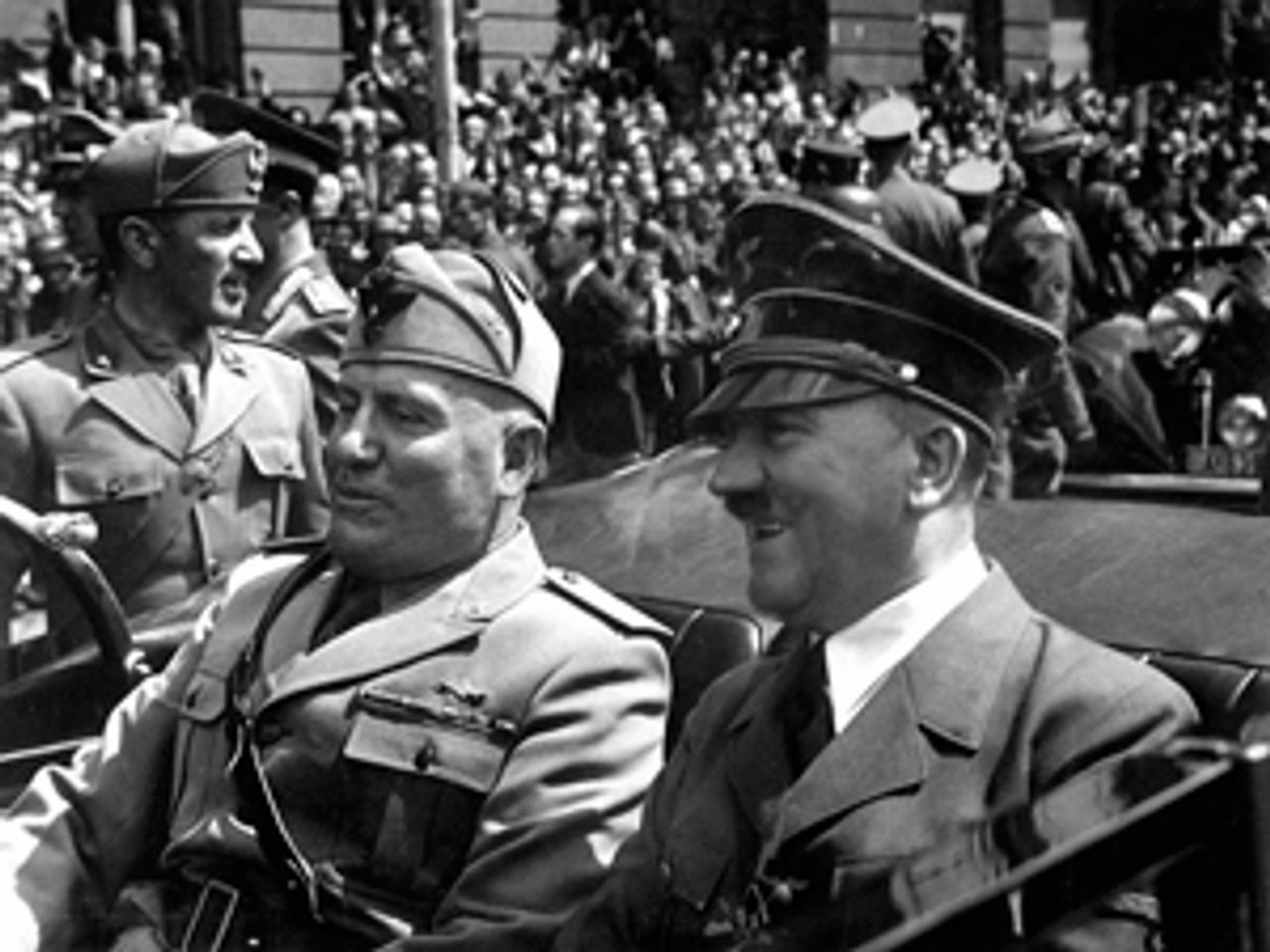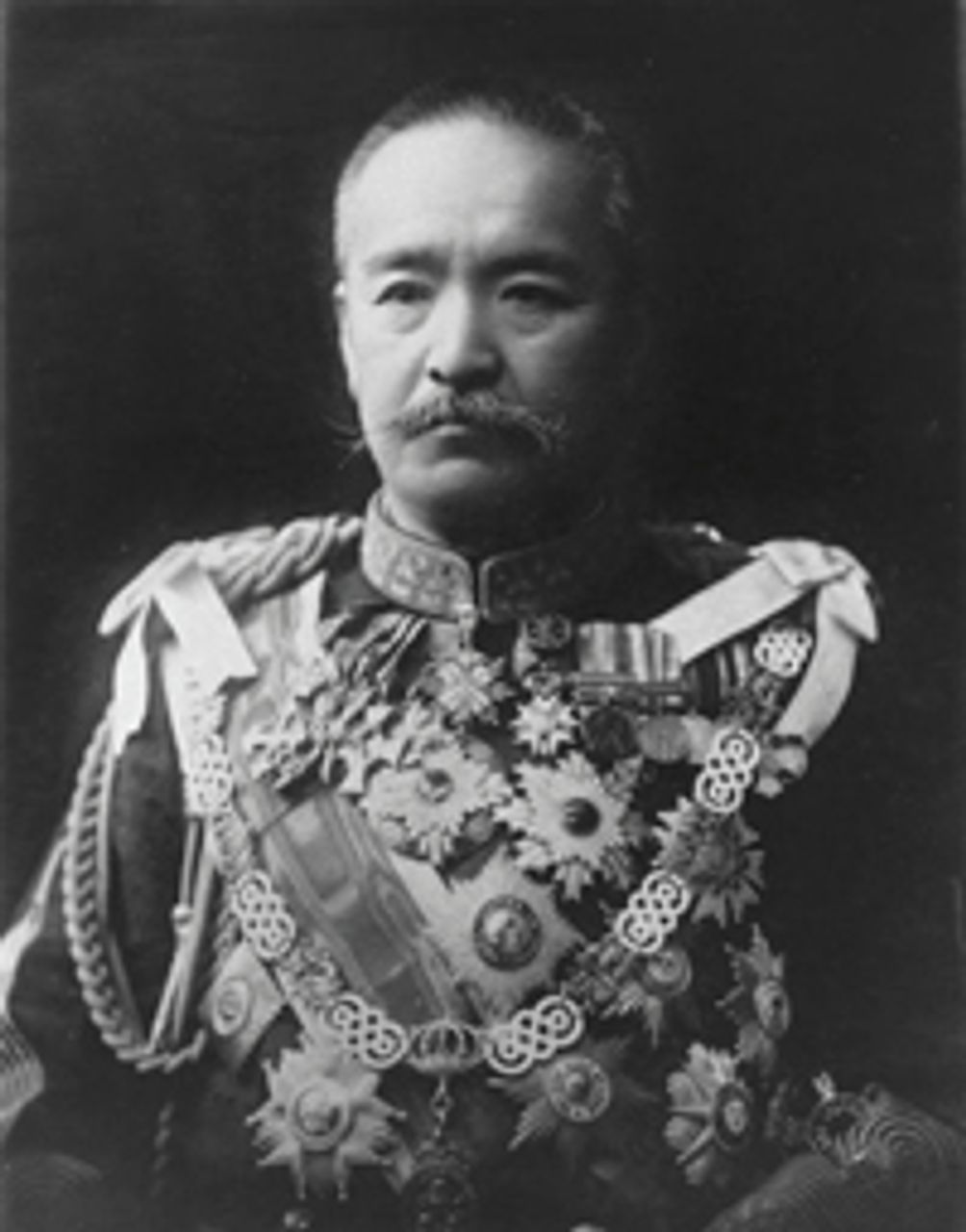This Week in History provides brief synopses of important historical events whose anniversaries fall this week.
25 Years Ago | 50 Years Ago | 75 Years Ago | 100 Years Ago
25 years ago: Forty-year sentence for striking coal miners
 Framed miners Donnie Thornsbury, David Thornsbury,
Framed miners Donnie Thornsbury, David Thornsbury,Arnold Heightland and James Darryl Smith
On February 4, 1988, four Kentucky miners, victims of one of the most blatant frame-ups ever orchestrated by the federal government against workers, were sentenced. The four were among 2,000 miners in Kentucky and West Virginia involved in the bitter 15-month strike of the A.T. Massey Coal Company and its subsidiaries in 1984-85.
Even though a fifth miner, Paul Smith, had just been acquitted of murder charges stemming from the same incident because of a lack of credible evidence, Judge Henry Wilhoit, presiding over the trial of the four miners, meted out nearly the maximum sentences allowable. United Mine Workers of America (UMWA) Local 2496 President Donnie Thornsbury, 35, was given a 40-year sentence, Arnold Heightland, 48, received 45 years, while David Thornsbury, 33, and James Darryl Smith, 35, were each handed 35-year sentences.
Paul Smith was rearrested immediately after his acquittal by a federal jury, and forced to face the same charges in a Kentucky state court.
All five miners were framed up for the May 1985 shooting death of scab coal hauler Hayes West. The five were among the most militant miners at the Samoyed Energy Company mine in Pike County, Kentucky, near the West Virginia border. There were no eyewitnesses, no fingerprints of the defendants on any of the guns or shell casings allegedly used in the shooting, and the shotgun that was allegedly the murder weapon was never found.
Massey provoked the strike when it refused to sign the September 1984 national contract reached by the UMWA and the Bituminous Coal Operators Association. A number of witnesses testified that the shoot-up of the coal truck driven by West was a provocation staged by the company to obtain a court injunction against picketing in order to break the strike.
50 years ago: Ba’ath Party launches Iraq bloodbath with CIA backing
 Qasim’s body after killing
Qasim’s body after killingOn February 8, 1963, the Iraqi wing of the pan-Arabist Ba’ath Party launched a coup that brought down the government of Prime Minister Abd al-Karim Qasim. Qasim was executed by firing squad the next day. General Ahmed Hassan al-Bakr became prime minister and Colonel Abdul Salam Arif president. In addition to Qasim, unknown thousands of Iraqi Communist Party members, most of them workers and professionals, were murdered in the coup and its aftermath.
The US Central Intelligence Agency (CIA) had intimate knowledge of the Ba’ath Party plot, and allegedly supplied the Ba’athists with the names of communists to be killed. National Security Council staff member Robert Komer wrote President John F. Kennedy on the night of the coup, February 8, 1963 that the “CIA had excellent reports on the plotting, but I doubt either they or UK should claim much credit for it.”
In his memoirs, CIA analyst Harry Rositzke said the coup was “was forecast in exact detail by CIA agents.” He explained, “Agents in the Ba’ath Party headquarters in Baghdad had for years kept Washington au courant on the party’s personnel and organization … CIA sources were in a perfect position to follow each step of Ba’ath preparations for the Iraqi coup, which focused on making contacts with military and civilian leaders in Baghdad ...To call an upcoming coup requires the CIA to have sources within the group of plotters. Yet, from a diplomatic point of view, having secret contacts with plotters implies at least unofficial complicity in the plot.”
The coup demonstrated the political bankruptcy of the Iraqi Communist Party. In the late 1950s the ICP had tens of thousands of members, as opposed to only a few hundred Ba’athists, and moreover had influence in unions representing oil, railway, and port workers and the capacity to call mass demonstrations. But, in line with the demands of Moscow, the ICP supported Qasim and the military officers after the anti-royalist coup of 1958, and continued to support his military regime even as Qasim cracked down on the party and its press. Rather than mobilizing the industrial power of the working class, the ICP only deepened its support for Qasim as the Ba’athist threat gathered.
At the time of the coup, the Ba’athists were demanding a union with Egypt and Syria in the already-defunct United Arab Republic. Supported by the ICP, Qasim called for an “Iraq first” policy increasingly tilted toward the Soviet Union in the Cold War. Qasim further angered Washington and London by taking measures to nationalize the Iraq Petroleum Company and by threatening Kuwait.
75 years ago: Italian Fascist government introduces anti-Semitic policies
 Mussolini and Hitler
Mussolini and HitlerOn February 7, 1938, the Italian fascist regime of Benito Mussolini put in place a spate of new anti-Semitic laws. The laws outlawed the publication of books by Italian Jews without special permission, prohibited the translation of books by non-Italian Jews into Italian, and outlawed stage plays written by Jews and performances by Jews on Italian radio. The measures represented an attempt to eradicate Jewish influence from popular Italian culture.
As the Rome-Berlin axis deepened, Mussolini’s regime increasingly mimicked German Nazism. Italian fascism had recently adopted for its military the Prussian “goose step,” the exaggerated high-step march of the Wehrmacht, but calling it instead “Passo Romano.”
In the early days of Italian fascism, when its first order of business was breaking the Italian labor movement, Mussolini was financially backed by a number of Jewish industrialists and landowners. Historian Robert O. Paxton has noted that Mussolini even maintained Jewish acolytes like Fascist Party fanatic Aldo Finizi, while a Jewish mistress of Mussolini penned his first authorized biography. The fascist “March on Rome” in 1922, when Mussolini seized power, involved some two hundred Italian Jews.
In 1938, when the first racial laws were introduced, one Italian Jewish adult in three was a member of the ruling Fascist party. Later in the year, intermarriage between Jews and Christians was banned and Jews were driven out of the professions and the civil service. Only five years earlier Mussolini was listed by the American Jewish Publishers among the “Twelve Christian Champions of the Jews.”
100 years ago: Protests force resignation of Japanese prime minister
 Katsura Tarō
Katsura TarōOn February 4, 1913, the government of Prime Minister Katsura Tarō was censured by Japan’s Diet, its bicameral legislature, after mass protests broke out.
Katsura had been Prime Minister in 1901-1906 and 1908-1911. During these periods Japan signed the 1902 Anglo-Japanese Alliance, won victory in the 1904-1905 Russo-Japanese War and signed the Taft-Katsura agreement with the United States, which recognized Japanese hegemony over Korea. A conservative politician, Katsura believed that he was responsible to the Emperor and not the Diet.
Perceived to be furthering his own financial interests and those of the military over the welfare of the population, Katsura was deeply unpopular. Upon resigning in 1911 he became a kōshaku or prince and one of the genrō, who were extra-constitutional advisors to the emperor.
Sainji Kinmochi had been appointed prime minister when Emperor Meiji died in July 1912. Kinmochi rapidly became embroiled in conflicts with the army command, and resigned. Katsura was reappointed prime minister by the new Emperor Yoshihito in December 1912.
Katsura refused the navy’s demands for more money for new battleships. When the navy threatened to refuse to appoint a Navy Minister, Katsura went to the emperor, who passed an edict forcing the navy to provide a minister. This was viewed as evidence of a lack of commitment to constitutional government. Businessmen, journalists and opposition parties united in a “Movement to Protect Constitutional Government.” Widespread riots, known as the “Taisho Political Crisis” followed, but Katsura refused to compromise, suspending the Diet three times and forming his own party, the Rikken Doshikai, establish a base of support.
Protests spread, with thousands rioting in Tokyo, setting fire to police stations and vandalizing pro-government press offices. For the first time in Japanese history, the Diet passed a vote of no confidence. Katsura and his cabinet resigned on February 11, the day after tens of thousands of protesters surrounded the Parliament Building.
